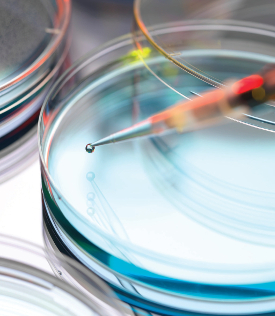- LBDDS should be considered when conventional formulations provide insufficient bioavailability.
- LBDDS are versatile; they include the use of lipids and lipid technologies in pharmaceutical formulations intended for various routes of administration, e.g., oral, transdermal, parenteral, rectal, ocular, etc.
- According to the American Association of Pharmaceutical Scientists (AAPS), lipid-based systems are used for a number of reasons: 1
- to impact systemic or local drug disposition by impacting solubility, permeability, absorption, distribution, and metabolism;
- to produce physically and chemically stable formulations that offer a safe and effective means to deliver drugs to the intended site of absorption or action; and
- to overcome patient compliance obstacles by improving taste, overall palatability, dosing frequency, and/or tolerability.

Approximately 90 percent of molecules in the discovery pipeline, and approximately 40 percent of drugs with market approval, are poorly water soluble.2Advanced delivery technologies, like lipid-based systems, are an alternative solution to safely and effectively deliver the proper therapeutic dose to patients.
Unlike conventional tablets or powder-filled capsules, LBDDS can present the drug compound in a solubilized state, eliminating dissolution rate limited absorption and improving bioavailability. For highly potent drugs, dosage form content uniformity may also be improved. Lastly, LBDDS may circumvent hepatic first-pass metabolism by promoting lymphatic transport.3
For oral dosage forms, LBDDS are typically presented to the patient encapsulated in a softgel shell, hard shell capsule, or as a liquid preconcentrate that can be further dose titrated. If encapsulated, the LBDDS can exist in several forms.
LBDDS Forms:
- Liquid fill: Drug compound is simply dissolved in a pharmaceutical grade neat lipid.
- Liquid fill: Drug compound is dissolved in a pharmaceutical grade lipid with a hydrophilic cosolvent.
- Liquid fill: Drug compound is dissolved in a self-emulsifying drug delivery system (SEDDS).
- Liquid fill: Drug compound is dissolved in a selfmicroemulsifying drug delivery system (SMEDDS).
- Semisolid fill: Drug compound is dissolved or dispersed in a semisolid lipid formulation; can exist as a SEDDS or SMEDDS.
- Solid fill: Drug compound is dissolved or dispersed in a solid lipid formulation containing melting point modulators, disintegrants, etc.; can exist as a SEDDS or SMEDDS.
Advantages and disadvantages of LBDDS
- There are a number of reasons to choose LBDDS over conventional formulation approaches when working with poorly soluble compounds:
- Lowering of dose by enhancing oral bioavailablilty; this can result in a significant active pharmaceutical ingredient (API) cost savings;
- Reduction or elimination of intra- and inter-subject variability due to delivering the drug compound in a “solubilized” form (overcomes dissolution rate limited absorption);
- Potential reduction or elimination of food effect on bioavailability;
- Possible reduction in hepatic first pass metabolism by promoting lymphatic transport;
- Improved dosage form content uniformity for low dose compounds; and
- Depending on the final LBDDS composition, the formulation can be encapsulated in softgel shells, hard shell capsules, or as a liquid preconcentrate allowing for dose titration.

There are occasions, unless mitigated, when LBDDS are not the ideal formulation approach; for example, API instability, excipient-shell compatibility issues, uncontrolled drug precipitation post dosing, or inadequate API loading in the LBDDS formulation.
The range of lipidic excipients and the abundance of factors that go into determining which combinations of lipids, cosolvents, and surfactants to select makes LBDDS a complex, formulation-dependent technology. AAPS states that the successful application of LBDDS “requires a broad understanding of the physics, chemistry, and biopharmaceuticals of lipidic excipients, and regulatory and manufacturing aspects related to their use.”4
What to look for in a contract manufacturing organization for LBDDS
When it comes to selecting a contract manufacturing organization (CMO) to handle LBDDS manufacturing, there are several criteria to consider:
- For manufacturing clinical and commercial supplies, the CMO must use Good Manufacturing Practices (GMP).
- The CMO must demonstrate knowledge of and compliance with global regulatory requirements.
- The CMO should demonstrate expertise and knowledge required to manufacture your LBBDS, particularly the physicochemical properties of excipients and the ability to work with a wide range of liquids, semisolids, and solids.
- The CMO should be committed to customers and customer projects as if they were their own.
AbbVie Contract Manufacturing has experience with LBDDS manufacturing for clients. Contact the experts at AbbVie to discuss your LBDDS manufacturing needs.
References
- “Lipid-Based Drug Delivery Systems -- About.” American Association of Pharmaceutical Scientists. www.aaps.org/Lipid-Based_Drug_Delivery_Systems/ Accessed 28 Apr. 2017.
- Kalepu, Sandeep, Nekkanti, Vijaykumar. “Insoluble drug delivery strategies: review of recent advances and business prospects.” 24 Aug. 2015. www.sciencedirect.com/science/ article/pii/S2211383515001069 Accessed 28 Apr. 2017.
- Rene´ Holma, Christopher J.H. Porter, Glenn A. Edwards, Anette Mullertz, Henning G. Kristensen, William N. Charman, 2003. Examination of oral absorption and lymphatic transport of halofantrine in a triple-cannulated canine model after administration in selfmicroemulsifying drug delivery systems (SMEDDS) containing structured triglycerides. European Journal of Pharmaceutical Sciences 20 (2003) 91–97.
- “Lipid-Based Drug Delivery Systems -- About.” American Association of Pharmaceutical Scientists. www.aaps.org/Lipid-Based_Drug_Delivery_Systems/ Accessed 28 Apr. 2017